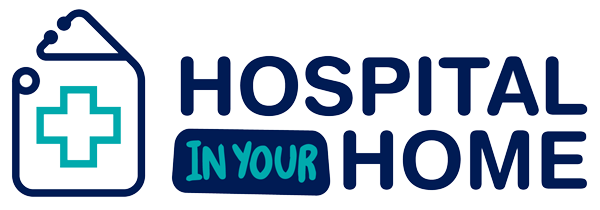Decoding Hospital at Home: Understanding the New Frontier in Healthcare

If you’ve found yourself asking, “What is hospital at home?” you’re not alone.
This innovative healthcare model is reshaping how medical services are delivered, merging the comfort of home with the rigor of hospital care.
Hospital at Home (HaH) allows patients to receive hospital-level care in their own homes—a concept that has gained significant traction, particularly in response to challenges posed by the COVID-19 pandemic.
What is Hospital at Home?
Hospital at Home is a care model that brings many services typically found in a hospital into the patient’s home.
Originating in the early 1990s from models developed by researchers at Johns Hopkins University, HaH was designed to provide a safe, effective alternative to in-hospital care for certain patients.
Under this model, healthcare providers deliver services like IV medications, oxygen therapy, and vital sign monitoring at a patient’s home, supported by advanced telehealth technologies.
How Does Hospital at Home Work?
The journey into HaH starts with a patient’s eligibility assessment, conducted by healthcare professionals, to ensure that the patient’s condition can be safely managed at home.
Once approved, the home is equipped with the necessary medical equipment, and a personalized care plan is established.
Daily medical care is provided through a combination of in-person visits by healthcare professionals and remote monitoring.
This setup ensures continuous medical oversight and quick response to any emergencies.
When the treatment course is complete, the patient is formally discharged from the HaH service, similar to a traditional hospital discharge.
Technologies such as telemedicine devices, remote monitoring tools, and digital health applications play a crucial role in the HaH model.
These technologies enable healthcare providers to monitor patients’ health status in real-time and communicate effectively, ensuring that the level of care provided at home matches that of traditional hospitals.
The Benefits of Hospital at Home
1. Enhanced Patient Outcomes
Patients receiving care in their own homes typically encounter fewer medical complications compared to those in hospital settings.
The familiar and comfortable environment of home can significantly speed up the recovery process for patients.
Being at home allows patients to feel more relaxed and in control, leading to higher overall satisfaction with their care.
2. Economic Advantages
Hospital-at-home programs can be more cost-effective than traditional hospital care by reducing the need for expensive hospital stays.
These programs optimize the use of medical resources, potentially lowering healthcare costs overall by managing resources more efficiently.
3. Environmental Impact
Hospitals are among the most energy-intensive facilities. By reducing the number of patients needing in-hospital care, HaH can significantly cut down on energy usage.
With fewer patients in hospitals, the amount of clinical waste produced can also decrease, contributing to less environmental pollution.
4. Reduction in Hospital-Related Risks
Home care can reduce the risk of hospital-acquired infections, a significant concern in hospital settings.
HaH programs often provide more personalized care, which can improve the management of the patient’s condition and enhance safety.
5. Accessibility and Convenience
Patients can receive high-quality medical care without the need to travel, which is particularly beneficial for those with mobility issues or those living in remote areas.
HaH facilitates greater involvement of family members in the patient’s care process, often leading to better patient support and comfort.
Challenges and Considerations
Despite its benefits, HaH faces several challenges. Logistically, the need to swiftly set up hospital-grade equipment in someone’s home can be complex.
Regulatory hurdles also exist, including ensuring compliance with healthcare laws and securing insurance coverage for HaH services.
The selection of patients for HaH is another critical area. Not all patients are suitable candidates; typically, those selected for HaH have conditions that are serious but stable and manageable with the resources available at home.
Furthermore, addressing disparities in access to HaH services is crucial for ensuring that all patients who could benefit from such care have the opportunity to do so.
Conclusion
Hospital at Home represents a transformative shift in the healthcare landscape, offering high-quality care combined with the comfort of receiving it right at home.
This model not only promises increased patient satisfaction and reduced costs but also minimizes the environmental impact of traditional healthcare settings.
As Hospital at Home continues to evolve, it is set to become a core component of healthcare delivery, providing a compelling alternative for patients who value the comfort and convenience of home-based care.
With over 30 years of experience, Hospital in Your Home US, an extension of the pioneering Hospital in Your Home in Australia, stands at the forefront of this innovative care model.
Our expertise ensures that patients receive the highest standard of medical care directly in their homes, tailored to meet their individual needs.
If you are considering the benefits of Hospital at Home for yourself or a loved one, or if you are a healthcare provider or policymaker interested in how this model can enhance healthcare delivery, we invite you to contact Hospital in Your Home US.
Let us show you how we can help you succeed with a hospital in your home, ensuring that home is not just where the heart is, but where the care is, too.
FAQs
What is “Hospital at Home”?
Hospital at Home is a healthcare delivery model where patients receive hospital-level care in their own homes instead of in a traditional hospital setting. This model leverages technology, remote monitoring, and periodic visits by healthcare professionals to ensure patient safety and effective treatment.
How does Hospital at Home benefit patients?
Patients benefit from the Hospital at Home model through increased comfort, reduced risk of hospital-acquired infections, and potentially quicker recovery times. Being in a familiar environment can also reduce stress and improve overall patient satisfaction.
What types of treatments and conditions are suitable for Hospital at Home?
Hospital at Home is typically suitable for conditions that require close monitoring but are stable and predictable, such as certain infections, chronic disease exacerbations, and post-surgical care. Each program may have specific criteria based on the healthcare provider’s capabilities and resources.
Is Hospital at Home safe?
Yes, studies have shown that Hospital at Home is safe and can be as effective as traditional hospital care for appropriately selected patients. Safety measures include strict patient selection criteria, continuous remote monitoring, and quick-response teams ready to intervene if necessary.
How is care coordinated in a Hospital at Home program?
Care in a Hospital at Home program is coordinated through a central hub that monitors patients 24/7, supported by a team of doctors, nurses, and other healthcare professionals who visit patients at home. Technology plays a crucial role in maintaining communication and updating patient records in real-time.
